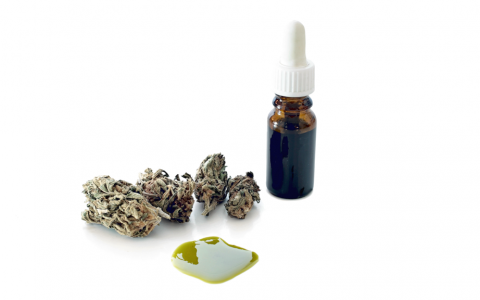Pressure to legalize medical cannabis in the small, Central European country of Slovenia has been mounting for some time. It’s beginning to look like 2017 could be a year of change.
The country, perched on the edge of the Alps just south of Austria, boasts magnificent mountin peaks, clear lakes and raging rivers, and—for the past five or six years—a rapidly growing medical cannabis community. While cannabis remains illegal in the country, the number of patients using cannabis to treat their ailments has skyrocketed. Many Slovenes now consume potent extracts made following the recipe of Canadian cannabis advocate Rick Simpson, who visited the country several times during his exile in Europe.
While still anecdotal, the stories of patients successfully treating themselves with medical cannabis have reached Slovenian doctors and scientists. That, combined with growing scientific evidence from around the world, makes the country’s current prohibitionist policies appear untenable in the long run.
On Dec. 22, Slovenian national newspaper Delo informed readers about various governmental and nongovernmental organizations asking the Health Ministry to clarify its policy on cannabis and protect medical use. The pressure for reform extended to adult-use legalization, though that issue has less public support.
“The attorney general said there are too many court cases for possession and drug trafficking (most regarding cannabis) and too many courts decisions with different standards which only proves the politics and the law is unclear,” Dean Herenda, who’s worked for the Slovenian government for 17 years, told Leafly.
Tens of Thousands of (Illegal) Patients
According to data from the Slovenian Ministry of Health, about 160 patients are currently enrolled in a limited program that allows consumption of synthetic THC—dispensed as Marinol, a registered pharmaceutical—for the treatment of a handful of conditions. “On the other hand, there are around 30,000 Slovenians treating themselves illegally with cannabis today,” Herada said, “which is a huge number for population of 2 million.”
Currently a secretary for the Ministry of Infrastructure, Herenda, 57, became a cannabis activist after first learning about the therapeutic effects of extracts in 2011. He’d just met Simpson as well as his most active Slovenian protégé, Božidar Radišič.
The turning point for Herenda came in 2015, after he watched the country’s medical system leave his loved ones to die. Within the span of three months, he lost his mother, father, and partner to different illnesses. “Cannabis extract helped all of them, but it was unfortunately too late to save their lives,” he said. And because it’s illegal, patients are forced to undergo treatment without a doctor’s supervision.
“In November 2015, we established the Association of NGO’s for Drugs and Drug Use, with me as president,” Herenda said. “Our goal is to change the inhumane laws concerning the growth, possession, and use of cannabis in Slovenia.” The association now organizes educational seminars for doctors, lawyers, politicians, and the general public.
Another important step in the march towards medical legalization came in October of last year, when the Chamber of Medical Doctors initiated a discussion on cannabinoid medicines in the Slovenian Parliament’s Committee for Health. Herenda and Radišič were present at the meeting and helped persuade all 11 members of the committee to vote for the removal of cannabis plants from the list of Schedule I substances and the reclassification of THC from Schedule II to Schedule III. The group also voted to begin preparing a legal framework that would allow cultivation, distribution, and prescription of cannabis flowers, oil, and tinctures—with costs covered by public health insurance.
The Health Ministry is expected to present a proposal for cannabis legislation to the government by the end of January.


